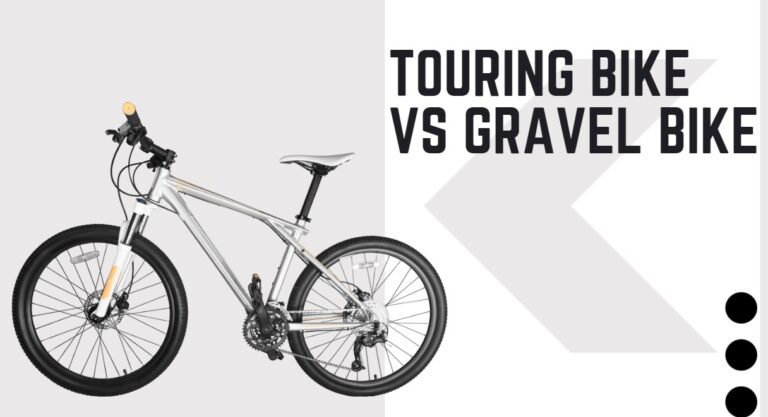The main difference between touring bikes and gravel bikes is that touring bikes are designed for long-distance riding on paved roads, while gravel bikes are designed for off-road riding on unpaved surfaces.
A touring bike typically has a more relaxed geometry than a racing bike, which makes it more comfortable to ride for long distances. It also has a more robust frame and fork, as well as wider tires that can handle a variety of surfaces.
A gravel bike is designed to be ridden on unpaved roads and trails, so it has a geometry that is optimized for stability and comfort. It also has thicker tires that can provide more traction and cushion on rough terrain.
Touring Bike Vs Gravel Bike
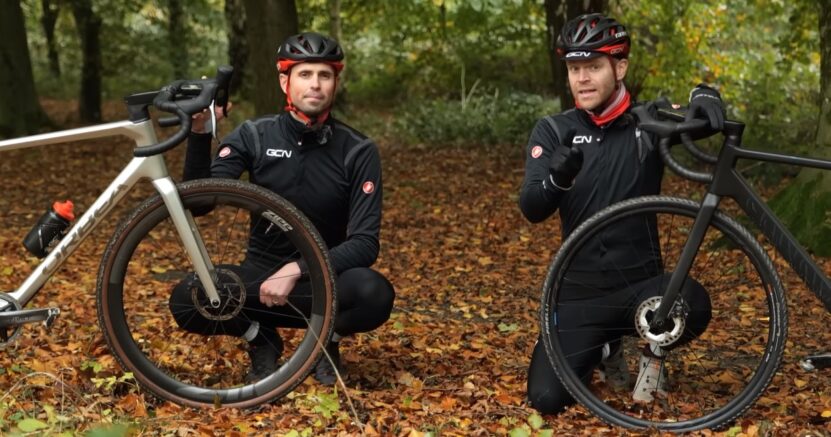
When it comes to touring bikes and gravel bikes, there are a few key differences that set them apart.
Touring bikes are typically designed for long-distance riding, while gravel bikes are more versatile and can be used for a variety of purposes. Additionally, touring bikes tend to be heavier and have more features than gravel bikes.
A touring bike is built for long-distance riding on paved roads, while a gravel bike can handle a wider range of surfaces, including dirt and gravel.
Touring bikes typically have a more comfortable ride thanks to their wider tires and suspension, while gravel bikes are more agile and can handle rougher terrain.
Touring bikes are designed for long-distance rides, often on the pavement. They typically have a more comfortable riding position and are outfitted with racks and fenders to carry gear and protect against the elements.
Gravel bikes, on the other hand, are made for off-road exploration. They feature wider tires and a more aggressive riding position, which makes them better suited for tackling rough terrain.
Gravel bikes also usually come with mounting points for front and rear racks, making them a great option for backpacking trips.
Bike Geometry
Touring bikes have a more relaxed geometry, which makes them better for long rides. They’re also generally heavier than gravel bikes because they’re designed to carry more weight.
Gravel bikes have a more aggressive geometry, which makes them better for shorter rides and for riding on rough terrain. They’re also generally lighter than touring bikes because they’re not built to carry as much weight.
Bike Terrain Sustainability
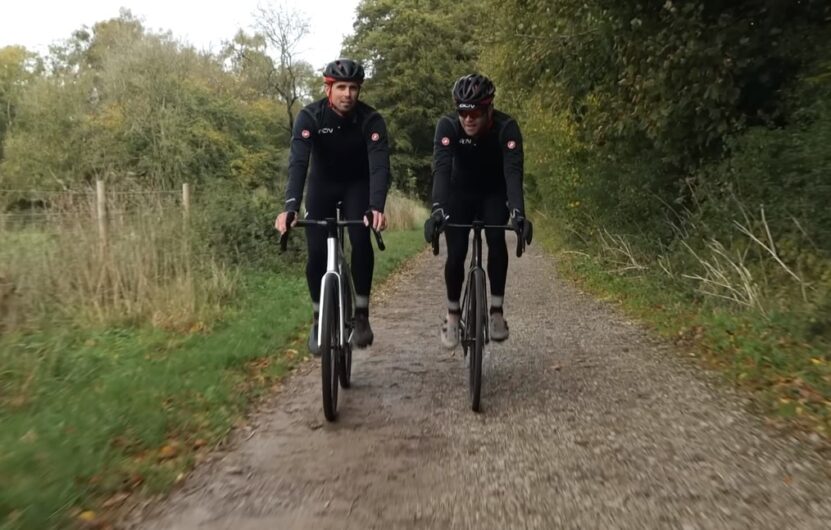
Touring bikes are typically built for paved roads, while gravel bikes are made to handle a variety of different terrains, including dirt and gravel roads. This means that a touring bike is not as efficient on unpaved surfaces, and can actually wear down the tires and bike components more quickly.
Gravel bikes, on the other hand, are better suited for rough terrain and can handle a wider range of conditions than touring bikes. This makes them more sustainable for off-road use, and also means they can last longer in harsh environments.
Bike Weight
Touring bikes are designed for carrying loads over long distances, while gravel bikes are designed for off-road riding. As a result, touring bikes tend to be heavier than gravel bikes.
However, this doesn’t mean that you can’t take a touring bike on gravel roads. It just means that you may have to be a bit more careful when riding over rough terrain.
Gravel bikes are also typically lighter than road bikes, making them a good option for those looking for a fast and agile bike.
Bike Frame
A touring bike and a gravel bike frame have some key differences. A touring bike is designed for long-distance riding, while a gravel bike is designed for off-road riding.
Touring bikes typically have longer wheelbases and more relaxed angles than gravel bikes. This makes them more stable and efficient when traveling long distances on the pavement.
Gravel bikes have shorter wheelbases and steeper angles, which makes them more nimble when riding on unpaved surfaces.
Another difference between touring bikes and gravel bikes is the material used to construct the frame. Touring frames are typically made of heavier materials such as steel or aluminum, while gravel frames are often made of lighter materials such as carbon fiber or titanium.
Wheels
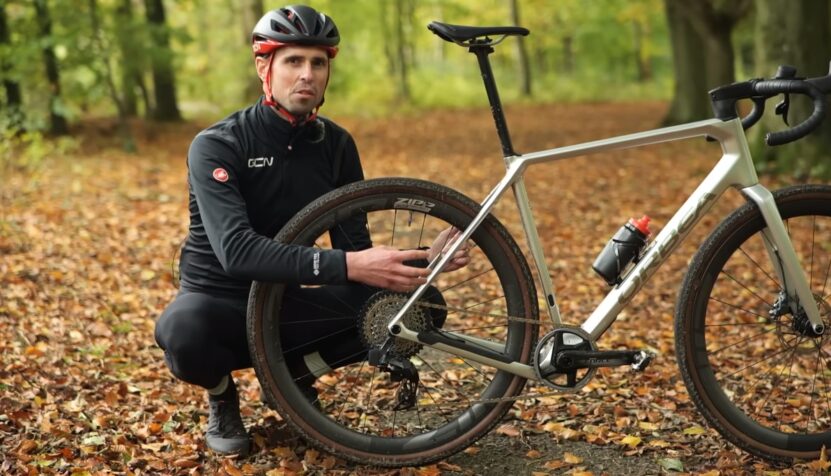
Touring bike wheels are typically wider and have a deeper profile than gravel bike wheels. This helps them handle better when you’re carrying a lot of weight, whether it’s luggage or supplies for a long ride. They’re also usually built for durability, so you can rely on them to last for thousands of miles.
Gravel bike wheels are designed for speed and efficiency. They’re narrower and have a shallower profile than touring bike wheels, which allows them to spin more quickly.
This makes them ideal for gravel rides, where you need to cover a lot of ground quickly. They’re also built for durability, so you can count on them to last for many miles.
Tires
Gravel bike tires are designed to provide better traction and handling on unpaved surfaces than touring bike tires. Gravel bike tires have a wider, more aggressive tread pattern that helps them grip the dirt and gravel roads you’ll be riding on.
Touring bike tires are typically narrower and have a less aggressive tread pattern, which is better for riding on paved roads.
For a bike that can handle a variety of surfaces, from paved roads to gravel roads, a gravel bike is a way to go. If you’re mostly going to be riding on paved roads, a touring bike may be a better option.
Handlebars
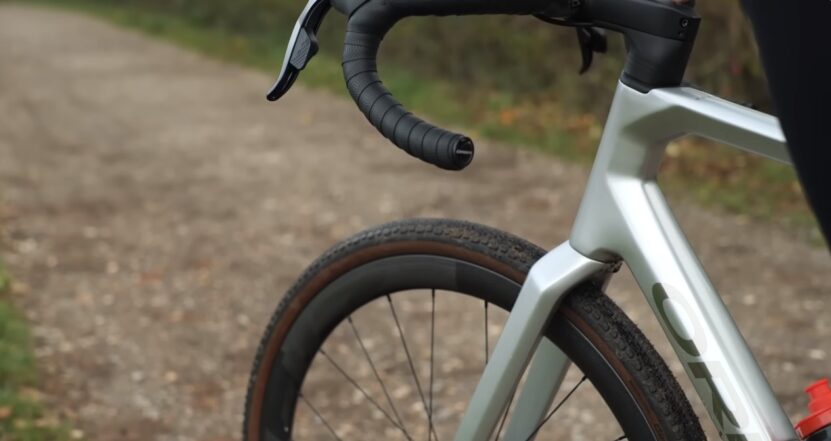
Touring bike handlebars are typically wider and have more curvature than gravel bike handlebars. This allows for a more comfortable grip when riding long distances. They also provide more leverage, which can be helpful when pedaling up steep hills.
Gravel bike handlebars are narrower and have less curvature than touring bike handlebars. This allows for a more precise grip when navigating tight corners or gravel roads. They also provide less leverage, which can be helpful when riding over rough terrain.
Drop bars are the traditional choice for touring bikes. They offer a wide range of hand positions and allow you to vary your grip depending on the terrain. This makes them ideal for long rides on asphalt roads.
Gravel bikes typically use flat bars. This gives you a more upright position, which is better for off-road riding. It also makes it easier to control the bike when it’s moving over rough terrain. Flat bars also allow you to mount accessories like lights and computer displays.
Gears
There are a few key differences between touring bikes and gravel bikes when it comes to gear. For one, touring bikes typically have more gears than gravel bikes.
This is because touring bikes are designed for longer rides, and having more gears means you can easily find the perfect gear for any terrain or incline.
Gravel bikes, on the other hand, typically have fewer gears but they are more spread out. This is because gravel bikes are designed to handle a wider range of terrains, so you don’t need as many gears to cover everything.
Another difference is that touring bikes often have lower gears for climbing, while gravel bikes typically have higher gears for speed.
Suspension
A touring bike is designed for long-distance riding on paved roads, while a gravel bike is designed for off-road riding on unpaved surfaces.
The main difference between the suspensions of these two types of bikes is that a touring bike has a traditional suspension fork with adjustable damping, while a gravel bike has a rigid fork with no suspension.
A traditional suspension fork absorbs impacts from bumps and irregularities in the road, while a rigid fork does not.
This makes a touring bike more comfortable to ride over long distances on paved roads, but a gravel bike is better suited for off-road riding on unpaved surfaces.
Another difference between touring bikes and gravel bikes is that touring bikes are typically heavier and have more upright riding positions, while gravel bikes are typically lighter and have more aggressive riding positions.
Are Gravel Bikes Good For Touring
Gravel bikes are good for touring. They are becoming more and more popular as options for touring. They offer many of the same benefits as traditional touring bikes, while also providing some unique advantages.
One of the biggest benefits of gravel bikes is that they can be used for a wider variety of applications. While traditional touring bikes are designed for long-distance rides on paved roads, gravel bikes can also be used for off-road rides, which can add some excitement to your trip.
Gravel bikes are also generally lighter and more nimble than traditional touring bikes, which can make them easier to ride on rough terrain. They also provide a bit more cushioning than traditional bikes, which can be helpful when riding on bumpy roads.
Are Gravel Bikes Good For Long Distance?
Yes, gravel bikes can be good for long-distance touring. They have thicker tires that can handle more bumps and they are built to be more stable on rough terrain.
This makes them a good option if you’re looking for a bike that can handle a variety of terrains. However, they may not be as fast as traditional road bikes on smooth pavement.
What Is Touring Bike Good For?
A touring bike is good for long-distance cycling trips. They typically have a more comfortable riding position than other types of bikes, along with luggage racks and other features that make them well-suited for extended rides.
Touring bikes are also relatively durable, which makes them a good option for riders who plan to travel on rough terrain or in inclement weather.
Conclusion
In the end, the choice between a touring bike and a gravel bike really comes down to what you plan to use it for. For a versatile bike that can handle a variety of terrain, then a gravel bike is the way to go. For something specifically designed for long-distance touring, then a touring bike is the better option.

